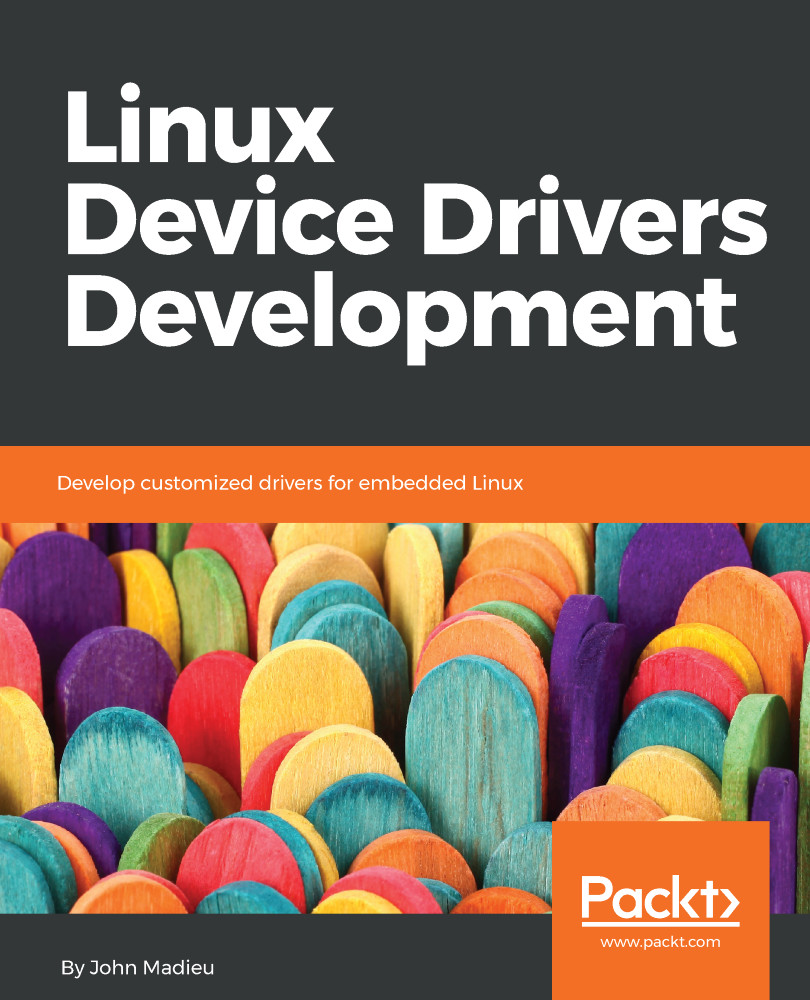GPIO controllers and the DT
Every GPIO controller declared in the DT must have the Boolean property gpio-controller set. Some controllers provide IRQs mapped to the GPIO. In that case, the interrupt-cells property should be set too; usually you use2, but it depends on the need. The first cell is thepinnumber, and the second represents the interrupt flag.
gpio-cells should be set to identify how many cells are used to describe a GPIO specifier. You usually use <2>, the first cell to identify the GPIO number, and the second for flags. Actually, most non-memory mapped GPIO controllers do not use flags:
expander_1: mcp23016@27 {
compatible = "microchip,mcp23016";
interrupt-controller;
gpio-controller;
#gpio-cells = <2>;
interrupt-parent = <&gpio6>;
interrupts = <31 IRQ_TYPE_LEVEL_LOW>;
reg = <0x27>;
#interrupt-cells=<2>;
}; The preceding sample is the node of our GPIO-controller device, and the complete device driver...

































































